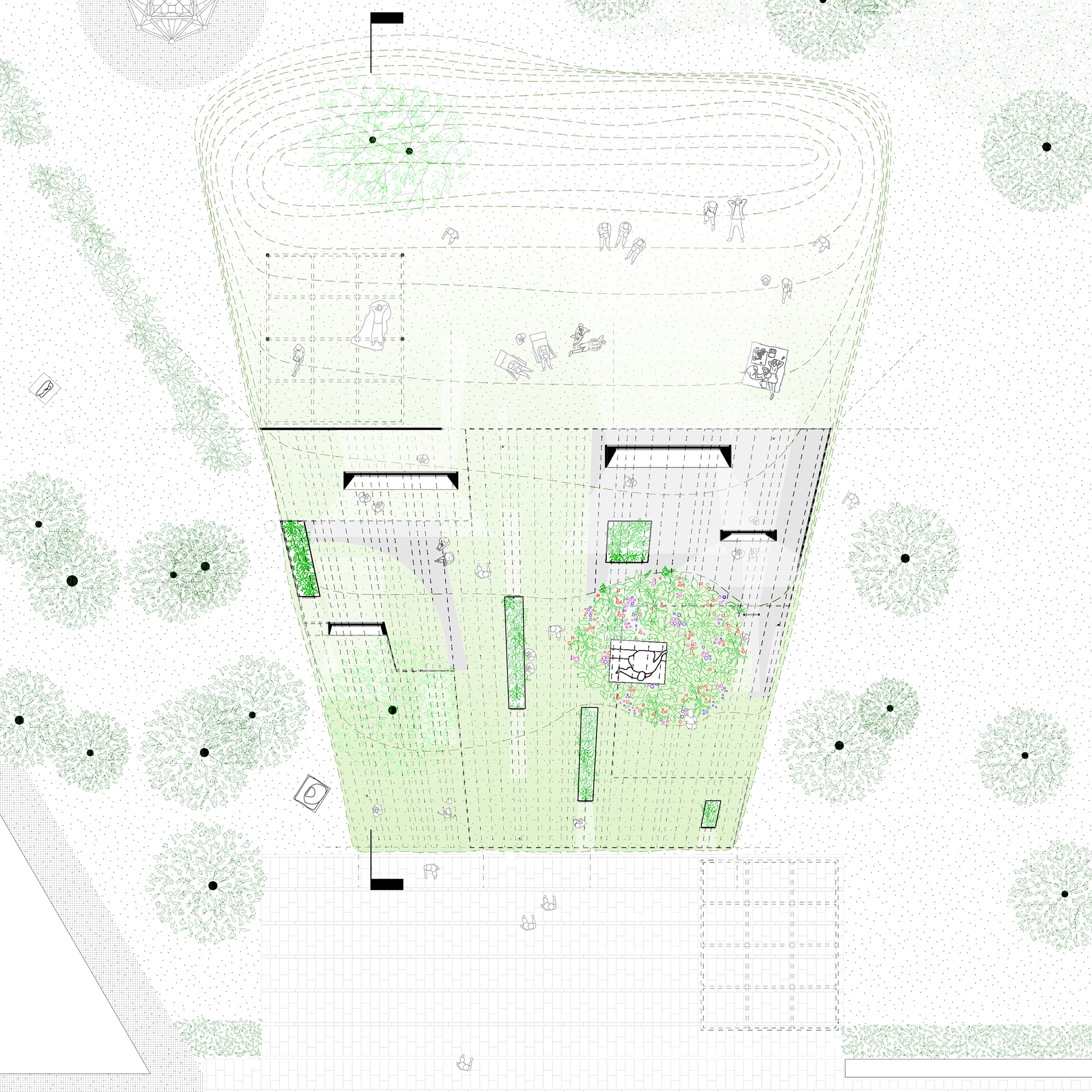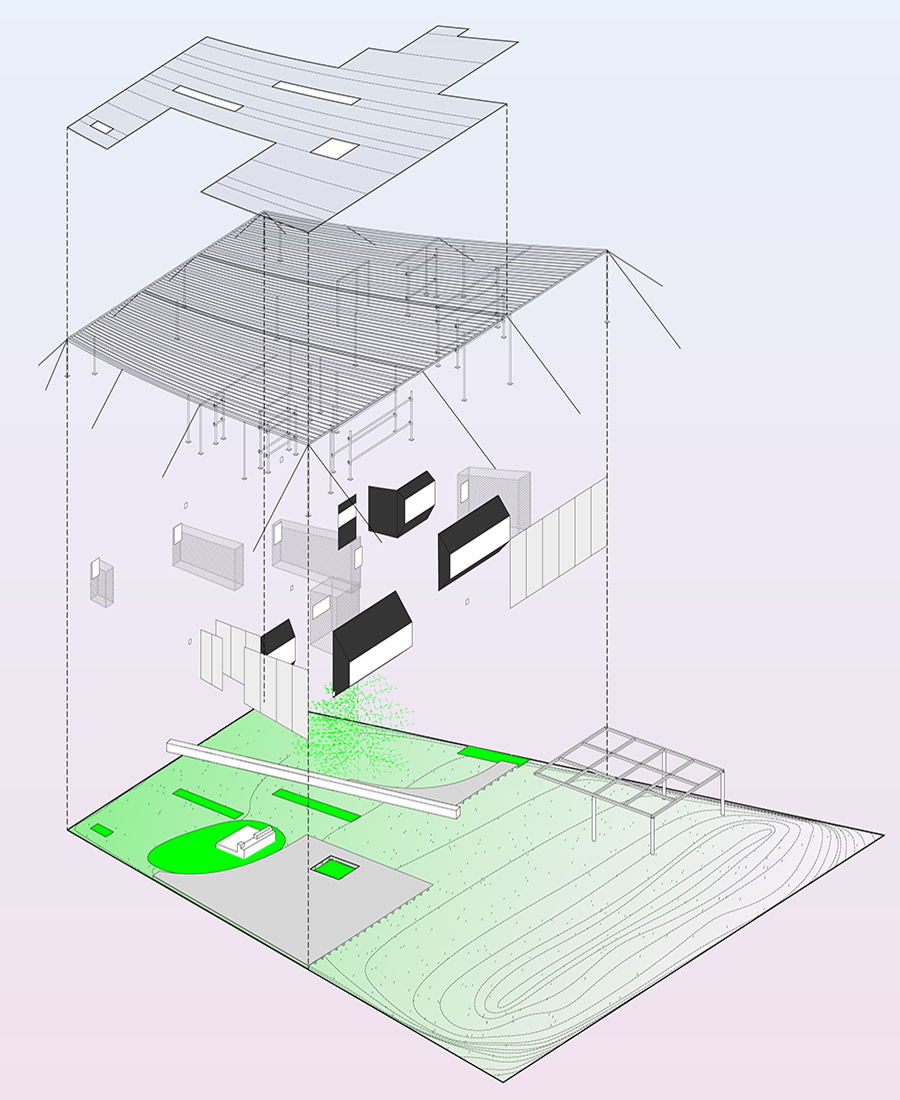Data Garden
Project
Data Garden
Traditional Custodians
The Bunurong Boon Wurrung and Wurundjeri Woi Wurrung peoples of the Eastern Kulin Nation
Location
Melbourne, Australia
Client
National Gallery of Victoria (NGV)
Year
2019
Status
Competition
Program
Cultural, Community
Area
400 m2 / 4 300 sf
Collaboration
-
S-I Projects
-
Nick Roberts

Data Garden
Project
Data Garden
Traditional Custodians
The Bunurong Boon Wurrung and Wurundjeri Woi Wurrung peoples of the Eastern Kulin Nation
Location
Melbourne, Australia
Client
National Gallery of Victoria (NGV)
Year
2019
Status
Competition
Program
Cultural, Community
Area
400 m2 / 4 300 sf
Collaboration
-
S-I Projects
-
Nick Roberts
The pavilion mediates the garden by mobilising an expansive range of digital scanning and display techniques. The intent is to showcase the NGV’s archived works, while experimenting with the new curatorial and experiential possibilities that technology offers.
Read More
The form of the pavilion reinforces a gesture of progression from the existing gallery to the future. Tracing a projection from the NGV outward, a catenary roof increases in scale to house an ever-widening field of displays that amplify and superimpose data from both the garden and the archive. By drawing the garden in, it offers a more vivid engagement with the archive. This frames the archive as an essential part of the museum’s future, allowing both the NGV and the public to consider it as part of an ever widening field of art viewing experiences.
The increasingly immersive environment will be exaggerated through a series of screens that display scans of the garden, drawn into a hybrid virtual space with the archived works.
Upon entering the pavilion, the first works on display will use Lidar infrared scanners and photogrammetry to present works from the NGV’s archive. Walking through the pavilion, the works shift in scope, scale, and number – creating a spectrum of present techniques to possible futures. Layered on top of this, scanned data from natural matter is also immersed in the field to allow the user to experience non-typical sensory immersion, experiences not often felt inside the normative gallery type.
Emerging from the new relationships between art, that you would expect to see in a gallery, now viewed in the garden; and garden, that you would expect to experience in a natural environment, now curated along-side ‘Art’- are expanded curatorial opportunities. The spectrum of curated matter dissolves between the existing gallery and the proposed NGV Contemporary site, defining a field of space. This field, much freer than the current modus operandi, liberated from the constraints of climate control, folk-lift sizes and the ever fear of contamination - is exactly the opposite. This freedom allows the user to become curator, shifting focus from the artist’s intention as well as the spatial configuration typically impressed upon most exhibitions by the curator.
While the form of the pavilion projects from the cinematic entry to the Grollo Equiset Garden outwards, it can be approached and experienced in several different ways. A shallow berm begins at the widest end of the pavilion, echoing the curve of the roof. Sitting on this slope, the form of the pavilion recedes back toward the NGV - an inversion of the initial view.
The berm offers a large space for gathering which can be encountered casually, or actively programmed through public lectures, discussions and film screenings.
The considered relationship between real and virtual space demonstrates how this technology expands curatorial strategies, and techniques for the production of art itself.
The economy of form and material creates a clear unity with content that it seeks to celebrate. The cables of the catenary curve delicately capture and define the proportions of the screens and vitrines which are further supported by a proprietary scaffold system, clad in aluminum panels. The reflective finish of the panels perceptually extends the work on display into space of the garden. Lights are run intermittently along these cables and set into the vitrines, exaggerating the widening perspective form and creating the possibility for night time use.
Read Less



